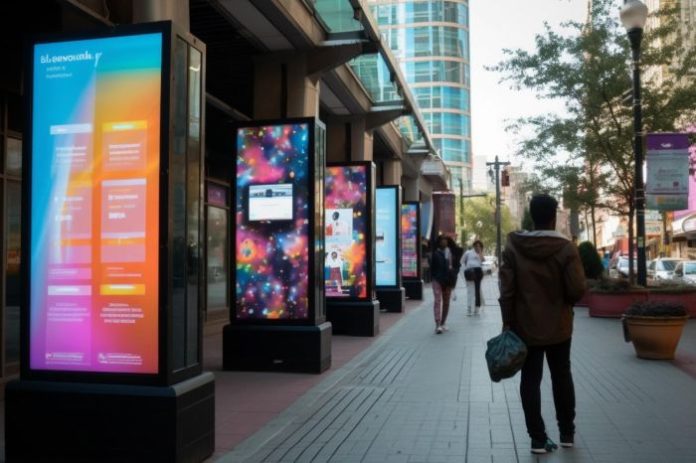Designing your office influences how your brand is perceived and how well your team can execute daily tasks. Office signage doesn’t just inform someone where the meeting room is or what’s behind a door. Clear signage helps visitors to feel comfortable and generally keeps everything running smoothly. Here are tips when designing office signage to ensure you’re making it easier on your day-to-day operations.
Table of contents
- 1. Stay True to Your Brand when Designing Office Signage
- 2. Make Navigation Clear and Stress-Free
- 3. Leverage Digital Signage for Increased Flexibility
- 4. Focus on Readability and Visibility
- 5. Leverage Functional Signage to Guide Workflow
- 6. Balance Style with Practical Use
- 7. Make sure to Maintain Signs as Your Office Changes
- Signs That Work for Your Business
1. Stay True to Your Brand when Designing Office Signage
Your signage is a reflection of your brand, so it should reflect the look and feel of the workplace. Utilize the same fonts, colors and logo style that you use on your website, business card or in brochures. Every sign in your place of work is an opportunity to reinforce your brand. Whether it’s a reception sign or a simple room label, displaying your brand style makes you appear professional and trustworthy.
2. Make Navigation Clear and Stress-Free
There are few things more frustrating than being lost in an office and not sure where to go. Signs for reception, meeting rooms, and lifts make it easy for everyone to navigate their way through the office. Once signs are correctly situated, workflow is enhanced, and the worker doesn’t need to pause to point the way. You know where everything goes, and stress levels are lower on the first walk through the door.
3. Leverage Digital Signage for Increased Flexibility
That isn’t to say old signs don’t have their place, because they do, but digital signage offers some flexibility that printed signs just don’t have. On a screen, information can be refreshed, such as a schedule of meetings, office announcements, or even a personalized welcome sign for a visiting client. This sort of signage is particularly useful in an office environment where items change frequently.
4. Focus on Readability and Visibility
Opt for text that can be seen from far away, and ensure there is enough contrast between the text and background. Make sure to opt for color choices like white on dark or dark on light, since they are the best. Make sure your signage is at eye level and in well-lit areas so that it is easily visible. Clear signs allow staff and visitors to receive the information they need to proceed in the day without delay.
5. Leverage Functional Signage to Guide Workflow
Keep in mind that investing in reliable digital signage that identifies storage areas, restricted zones, or safety guidelines is both organized and safe. When they no longer have to double-check where things are or whether they are in the right spot, operations become that much more efficient. In places where time and visibility are of the essence, functional signs can help reduce errors and keep jobs on track.
6. Balance Style with Practical Use
Always remember to select designs that are in harmony with the style of your office, and also easy to use and understand. For example, an elegant reception sign can create a mood for your office, and a directional sign can function as a visual that integrates into your interior space yet is clear. When signs contribute to the overall mood and don’t fight it, your workplace feels unified and considered.
7. Make sure to Maintain Signs as Your Office Changes
If your signage remains the same while everything else changes, the room suddenly feels outdated or confusing. Consider whether your signs are still appropriate and if they represent your current brand. By updating signs according to the state of affairs in the office, you keep a fresh and professional company. Small changes can have a big effect on the overall organization and cohesion of your workplace.
Signs That Work for Your Business
Office signs are an asset that supports your brand, makes life easier for guests, and keeps staff on target. The correct signs help your brand become visible in the small details of everyday life and make keeping the work flowing easy. So, when you’re designing office signage or renovating one, don’t look at signage as an afterthought. Instead, think of it as an investment in your brand and how your workplace operates.











